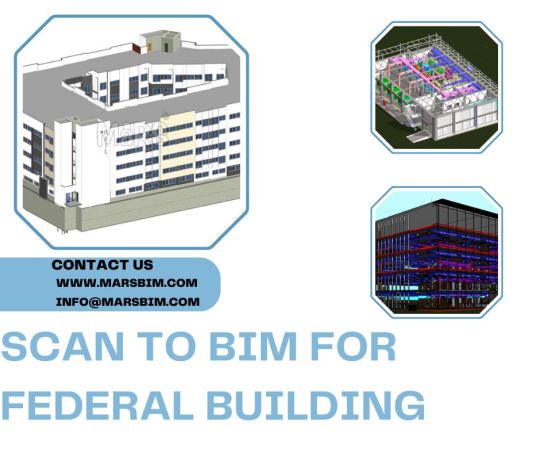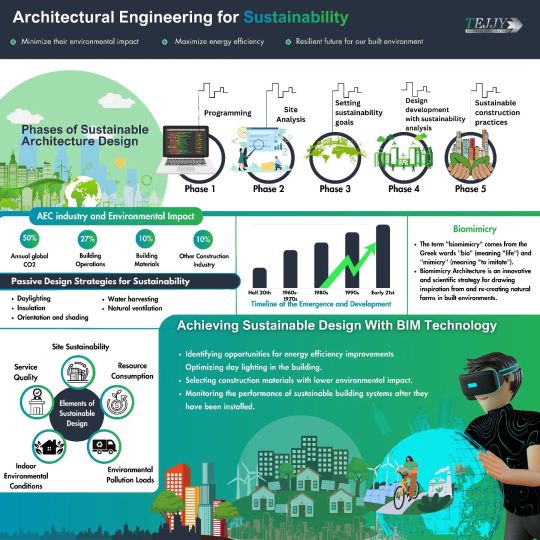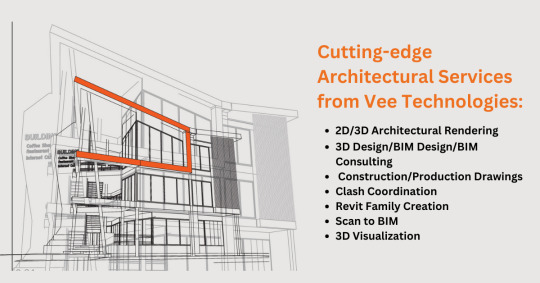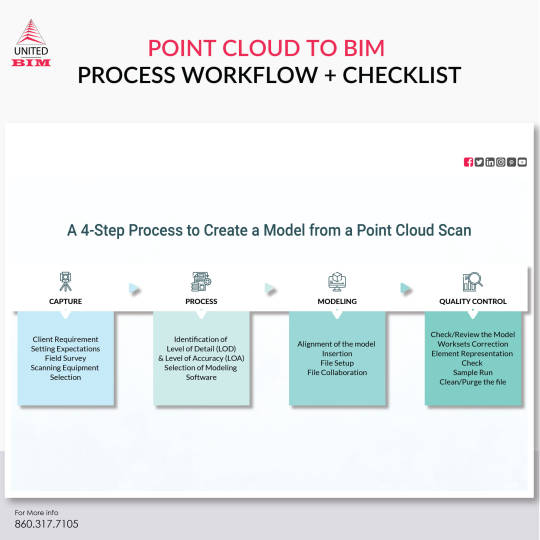#ScantoBIM
Text

Adaptive reuse is a practice involving repurposing existing structures or building for new uses while retaining their original architectural elements and characters. It is an innovative approach that brings life into older structure by adapting them to meet the evolving needs of a community. Through the use of modern processes such as BIM Services, adaptive reuse helps reimagining urban spaces that were previously seen as liabilities. It also reduces the environmental impact of new construction and preserving valuable resources.
Our series of blogs explains why adaptive reuse can be the future of urban planning. Click on the given link to read the 1st part and watch this space for the next part:
https://lnkd.in/d-tANhYW
#adaptivereuse#urbandevelopment#bim#bimservices#bimserviceproviders#construction#urbanconstruction#building#buildingconstruction#scantobimservices#architecture#scantobim
2 notes
·
View notes
Text
BIM Engineering Solutions in Dubai

Looking for reliable BIM Engineering Services? Choose S E C D Technical Services LLC, a leading BIM Engineering Company based in Dubai. Our BIM Consultancy Services cater to all your needs, from BIM Modeling to Revit BIM Modeling and Scan to BIM Dubai. #BIMEngineering #BuildingInformationModeling
Click Here For More Info:- https://bit.ly/3Kk8Tlx
2 notes
·
View notes
Text
Scan to BIM for Federal Building
Unlock the power of precision with our cutting-edge Scan to BIM services tailored for Federal Buildings. Seamlessly converting scan data into BIM, our expertise ensures unparalleled accuracy and efficiency in documenting and managing federal infrastructures. From historic landmarks to contemporary government structures, our Scan to BIM for Federal Buildings solution meticulously captures every detail, facilitating informed decision-making and streamlined project workflows. Trust our proven track record in delivering comprehensive BIM solutions specifically designed to meet the unique needs and standards of federal projects. Elevate your project management capabilities with Scan to BIM for Federal Buildings and embark on a journey towards enhanced efficiency, precision, and excellence in federal infrastructure management.

0 notes
Text

Sustainable architecture is also referred to as green architecture or environmental architecture. It challenges architects to produce smart designs and use available technologies to ensure that structures generate minimal harmful effects to the ecosystem and the communities.
Sustainable architecture design phases aims to reduce the negative environmental impact of buildings. It does this by:
Using materials, energy, and development space efficiently
Using eco-friendly building materials
Using energy-efficient construction methods
Reducing waste
Using recycled or renewable materials
Using efficient space planning
Integrating buildings into the surrounding ecosystem
Respecting natural resources
Embracing human, cultural, and historical distinctions
Sustainable architecture can also include net-zero buildings, which are designed to produce as much energy as they consume over a year.
Tejjy’s architectural design team facilitates the design and construction process from planning, feasibility analysis, value engineering, constructability reviews, construction documents, property facility management.
We have successfully completed industrial, commercial, residential, construction, renovation, and facility management project through digitization-integrated engineering design services.
#architecture#buildingdesign#engineering#bim#construction#aec#scantobim#facilitymanagement#commercial#industrial
0 notes
Text

Gsource Technologies pioneers the Scan to BIM Services landscape, offering unparalleled expertise in transforming scanned data into Building Information Models (BIM). Through cutting-edge technology and precision, Gsource seamlessly converts point cloud information into detailed and accurate 3D models. This transformative process ensures enhanced visualization, clash detection, and streamlined project coordination. Gsource's commitment to excellence in Scan to BIM services extends across diverse sectors, revolutionizing the way architectural, engineering, and construction projects are conceptualized and executed. Clients trust Gsource Technologies for its innovative approach, ensuring a seamless transition from reality to a comprehensive virtual representation through Scan to BIM services.
0 notes
Text

With our design capabilities and technical expertise, Vee Technologies helps construction projects with safe, functional, and aesthetically pleasing architectural designs. We ensure the designs meet the regulatory compliance and your budget.
visit: https://bit.ly/2JhjDo1
#architecturalservices#ArchitecturalDesign#ArchitecturalDesignServices#ArchitecturalServices#3DArchitecturalRendering#2DArchitecturalRendering#3DDesign#BIMDesign#BIMConsulting#3dVisualizations#ScantoBIM#ConstructionDrawings#ProductionDrawings
0 notes
Text

As the premier choice in #NewZealand, #SiliconEngineeringConsultantsLimited redefines #ScantoBIMServices through its unmatched expertise. #Auckland Visit Us:https://bit.ly/469NQu
#ScantoBIMServices#ScantoBIMOutsourcingServices#PointCloudtoBIMServices#ScantoRevitBIMServices#3DBIMModelingServices#ScantoBIM#BIMDraftingServices#CADAndBIMServices
1 note
·
View note
Text
A snapshot of Scan to BIM and best practices.
Scan to BIM (Building Information Modeling) is a process of converting physical or 3D laser scan data of a building or structure into a detailed, digital 3D model. The process involves capturing the geometry and features of a structure using 3D laser scanning technology and then processing the data to create a detailed 3D model. The resulting BIM model can be used for a variety of purposes, such as design, renovation, and facility management.

Capture the physical structure.
The first step in the scan to BIM process is to capture the physical structure using 3D laser scanning technology. This involves using a laser scanner to capture millions of data points about the shape, size, and location of the building or structure. The laser scanner emits a laser beam that bounces off the surfaces of the building and returns to the scanner, where it is measured and recorded. The resulting data is known as a "point cloud”.
Processing Point Cloud data to generate a 3D model.
The point cloud data is then processed using specialized software to create a 3D model. The software uses algorithms to analyze the point cloud data and identify features such as walls, floors, ceilings, windows, doors, and other structural elements. The software can also remove noise and errors from the data to create a more accurate representation of the building.
Import the data into Revit.
Once the 3D model has been created, it can be imported into BIM software such as Autodesk Revit. BIM software allows designers, architects, and engineers to create detailed models of the building that include information about the structure, materials, and systems such as HVAC, electrical, and plumbing. BIM models can also include information about the building's energy consumption, carbon footprint, and other sustainability metrics.
Level of detail and Level of accuracy.
One of the main benefits of using scan to BIM is the level of detail and accuracy that can be achieved. Laser scanning technology can capture millions of data points, resulting in a highly accurate representation of the building. This can be especially useful for renovation or retrofit projects, where accurate measurements are critical for ensuring that new elements fit properly with the existing structure.
Safety on construction sites.
Scan to BIM can also be used to improve safety on construction sites. By creating a detailed digital model of the building, construction workers can visualize the building in 3D and identify potential hazards or safety issues before they arise. This can help prevent accidents and injuries on the job site.
Reduce costs and project timelines.
Another benefit of the scan to BIM is that it can help reduce project timelines and costs. By using laser scanning technology to capture the building's geometry, designers and engineers can avoid the need for manual measurements and reduce the time required to create accurate models. This can result in cost savings for the project as well as reduced construction timelines.
Best practices of Scan to BIM.
This process has become increasingly popular in the construction industry due to its ability to provide highly accurate and detailed information about existing structures. Here are some best practices for Scan to BIM:
1. Plan the project thoroughly: Before starting the scanning process, it's important to plan out the project. This includes determining the scope of the project, identifying any potential obstacles or challenges, and creating a timeline.
2. Use high-quality equipment: To ensure the accuracy of the data collected during the scanning process, it's important to use high-quality equipment. This includes 3D laser scanners, cameras, and other related equipment.
3. Capture all relevant data: When scanning the building, it's important to capture all relevant data, including walls, floors, ceilings, and other structural elements. This will help create a more accurate and detailed 3D model.
4. Use a consistent scanning methodology: To ensure consistency in the data collected, it's important to use a consistent scanning methodology. This includes using the same scanning settings, capturing data in the same order, and scanning at the same speed.
5. Verify and validate the data: After the scanning process is complete, it's important to verify and validate the data. This includes comparing the scan data to existing building plans or other reference materials to ensure accuracy.
6. Use experienced professionals: To ensure the success of the Scan to BIM project, it's important to use experienced professionals who are familiar with the scanning process and the software used to create the 3D model.
7. Collaborate with stakeholders: Throughout the Scan to BIM process, it's important to collaborate with all stakeholders, including architects, engineers, and contractors. This will ensure that the final 3D model meets everyone's needs and expectations.
How can BIM Engineering US, L.L.C. support modern construction, renovation, and facilities management with Scan to BIM?
BIM Engineering US, L.L.C. can support modern construction, renovation, and facilities management with Scan to BIM by leveraging the power of 3D scanning technology and Building Information Modeling (BIM).
Scan to BIM is a process of capturing the physical environment of a building using 3D laser scanners and converting it into a digital model that can be used for design, construction, renovation, and facilities management. This digital model, created by BIM Engineering US, L.L.C., can be used to improve the accuracy, efficiency, and quality of the construction and renovation process while reducing costs and minimizing errors.
Here are some of how BIM Engineering US, L.L.C. can support modern construction, renovation, and facilities management with Scan to BIM:
1. Accurate documentation of existing conditions: Scan to BIM allows BIM Engineering US, L.L.C. to capture accurate measurements and data of the existing building conditions, such as dimensions, shapes, and layouts. This information can be used to create a highly accurate 3D model of the building that can be used for planning and design purposes
2. Streamlined design process: BIM Engineering US, L.L.C. can use the Scan to BIM model to streamline the design process by importing the scanned data into their BIM software, allowing them to create accurate and detailed designs based on the existing conditions of the building
3. Improved construction planning and coordination: With the Scan to BIM model, BIM Engineering US, L.L.C. can perform clash detection and constructability analysis to identify potential conflicts and issues before construction begins. This helps to reduce delays, change orders, and costs during the construction process
4. Efficient renovation and retrofitting: Scan to BIM can also be used for renovation and retrofitting projects by creating an accurate 3D model of the existing building, which can be used to plan and execute the renovation process. This can reduce the time and cost of the renovation process, and minimize disruption to building occupants
5. Improved facilities management: BIM Engineering US, L.L.C. can also use the Scan to BIM model to improve facilities management by creating a detailed record of the building's systems and components, including HVAC, plumbing, and electrical systems. This can be used to track maintenance and repairs and plan for future upgrades or replacements
Improving the accuracy and speed of existing conditions with Reality Capture.
Reality Capture is a powerful tool for improving the accuracy and speed of existing conditions documentation. Here are some ways that you can use Reality Capture to achieve these goals:
1. Accurately capture existing conditions: Reality Capture allows you to create accurate 3D models of existing conditions using photogrammetry, laser scanning, or a combination of both. This can help you ensure that your documentation is accurate and up-to-date, and can save you time by eliminating the need for manual measurements.
2. Quickly process data: Reality Capture is designed to process large amounts of data quickly, which means you can create accurate 3D models in a fraction of the time it would take to create them manually. This can save you time and allow you to focus on other aspects of your project
3. Improve communication: 3D models created with Reality Capture can be easily shared with team members, clients, and stakeholders. This can help improve communication and ensure that everyone is on the same page.
4. Enhance design workflows: Reality Capture can be used to create accurate 3D models that can be imported into other software applications, such as CAD or BIM software. This can enhance your design workflows and help you create more accurate and efficient designs.
5. Detect changes: Reality Capture can be used to detect changes in existing conditions over time. By comparing 3D models created at different points in time, you can identify changes that may affect your project and make necessary adjustments.
In summary,
Scan to BIM is a process of converting physical or 3D laser scan data of a building or structure into a detailed, digital 3D model. The process involves capturing the geometry and features of a structure using 3D laser scanning technology and then processing the data to create a detailed 3D model. The resulting BIM model can be used for a variety of purposes, such as design, renovation, and facility management. Scan to BIM offers a range of benefits, including improved accuracy, safety, and cost savings.
Reality Capture is a powerful tool that can help you improve the accuracy and speed of existing conditions documentation. By using this technology, you can create accurate 3D models quickly and easily, improve communication with stakeholders, enhance your design workflows, and detect changes in existing conditions.
BIM Engineering US, L.L.C. can support modern construction, renovation, and facilities management with Scan to BIM by providing accurate documentation of existing conditions, streamlined design processes, improved construction planning and coordination, efficient renovation and retrofitting, and improved facilities management.
Call Us: +1-703-994-4242
Visit Us: www.bimengus.com
0 notes
Text
Construction industry is currently responsible for 50% of the solid waste that is generated worldwide. This is a staggering number which has long lasting environmental impact and has created considerable concern in the recent decades. Green building methods have been adopted around the globe as a strategy to curtail construction waste. The application of BIM provides significant value at different stages of the building’s lifecycle in terms of waste management.
To know in detail how can BIM help reduce waste in construction click on the given link,
#constructionindustry#greenbuildingmethods#bimservices#wastemanagement#buildingwastemanagement#constructionwastereduction#bim#3dvisualization#clashdetection#bimcoordinationservices#bimmodel#hvac#building#construction#shopdrawings#scantobim#3dlaserscanning#scantobimservices
1 note
·
View note
Photo

Downloadable Infographic:
Point Cloud to BIM Process Workflow + Checklist
This infographic highlights the four stages of the Point Cloud to BIM Process and quality checks to be followed at each stage.
#UnitedBIM#PointCloud#ScanToBIM#Asbuilt#3DModeling#Revit#AEC#Construction#Retrofit#Renovation#EastHartford#Connecticut
1 note
·
View note
Text
Innovative Solutions: Transforming MEP Work Tracking through Scan to BIM Optimization Techniques
🚀 Exciting news for MEP professionals! 🏗️ Dive into the world of "Optimizing MEP Work Tracking With Scan To BIM." 🔄 Discover how the latest technology is reshaping the game in MEP work efficiency. Ready to revolutionize your projects? Contact us now.

0 notes
Link

Silicon EC UK provides efficient Scan to BIM services, including As-Built BIM Models, Architectural BIM Models, Structural, Piping, and MEPF. Our talented team of professionals delivers accurate and complex structures with modern approaches.
#scantobim#scan to bim services#scantobimconversion#ScantorevitBIMservice#ScantoBIMservice#BIMmodelingservices#BIMserviceprovider#3DScantoBIMService#SiliconECUKLtd
0 notes
Text
#gsourcetechnologies#engineeringdesignservices#architecturedesigns#scantobim#scantobimservices#architects
1 note
·
View note
Text
BIM Engineering and Consultancy Services in Dubai

Looking for top-quality BIM engineering and consultancy services in Dubai? Look no further than S E C D Technical Services LLC! Our expert BIM engineering consultants specialize in BIM CAD, modeling, and scan to BIM services, as well as BIM design and drafting and Revit BIM modeling. Contact us today for affordable, high-quality solutions that exceed your expectations. #BIMengineering #Dubai #engineeringconsultants
Visit Here:- https://www.silicongcc.com/cad-services-dubai-uae/building-information-modeling-bim.html
#BIMengineering#Dubai#engineeringconsultants#BIMCADservices#BIMmodelingservices#ScanToBIM#RevitBIMmodeling#BIMconsultancy#BIMdesign#BIMdrafting#engineering
1 note
·
View note
Text
The Standard Stages Involved in BIM MEP Coordination

Effective and efficient MEP systems are the result of coordinated planning, design, installation, and operation. Preventing delays during construction by identifying & resolving potential conflicts across trades is the primary goal of MEP coordination services.
0 notes
Text
Why BIM is important to MEP Contractors
More than 40% of contractors that utilize MEP BIM Models are able to decrease rework, eliminate mistakes, and save money while finishing projects within the allotted turnaround time. By removing conflicts and the possibility of human mistake, MEP BIM improves operational efficiency for contractors in comparison to conventional approaches. This results in lower costs, quicker turnaround times, and less expensive rework.
Contractors benefit greatly from the coordinated BIM model since it guarantees a smooth installation procedure by removing the chance of clashes between MEP parts on site.
Contractors may verify that MEP installations are completed in accordance with the BIM models during the building phase.
The arrangement of MEP systems, such as HVAC, plumbing, fire protection, electrical wiring, etc., can be monitored by contractors.
Contractors can obtain MEP fabrication or shop drawings from the coordinated BIM model of the construction project.
Accurate scheduling of components and budget estimates ensure that project is completed within the estimated time frame.
To know more Email- [email protected]
Call- +918788946040 +971-504816805
or Get a quote
1 note
·
View note